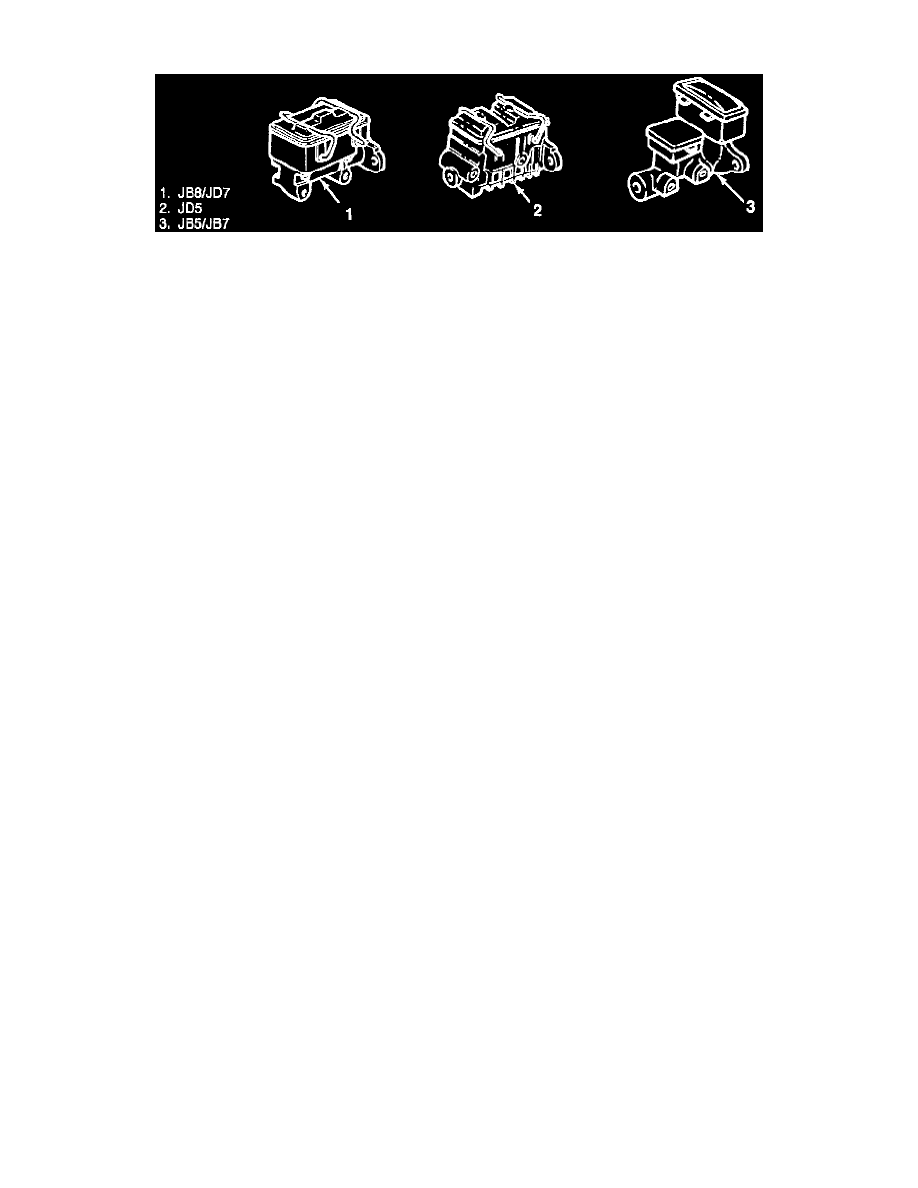C 2500 Suburban 2WD V8-6.5L DSL Turbo VIN F (1995)

Brake Master Cylinder: Description and Operation
Master Cylinder
Some vehicles use a conventional tandem master cylinder with two hydraulic pistons operating in line. The primary piston controls the front brake
system and the secondary piston controls the rear brake system.
Other models use a master cylinder that operates the same as the conventional master cylinder, but also incorporates a quick take-up feature in the
rear chamber to reduce excessive pedal travel which may result from increased fluid displacement required to move the low drag caliper piston out
against the rotor.
The quick take-up uses a spring-loaded ball check valve to hold pressure in the large diameter rear chamber when the brakes are first applied. At
initial application, movement of the rear piston causes fluid to be displaced forward past the primary piston seal into the primary high pressure
chamber. At a specified pressure, the ball unseats and fluid from the large rear bore is displaced past the bore into the reservoir. When the brake
pedal is released, suction generated in the large bore chamber replenishes its fluid supply by drawing fluid from the reservoir around the quick
take-up lip seal and through a small bleed orifice in the ball seat.
